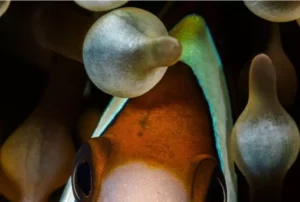The isopod that eats the tongue of fish
Living in the marine environment is not easy. Many are the factors that influence the biotope of the sea and the adaptations of marine species for their survival are diverse and surprising .

Surprising and “unpleasant” is the case with this isopod. Cymothoa exigua belongs to a family of ectoparasitic isopods with a curious and somewhat frightening strategy.
The female of this species of isopod enters through the gills of the host fish (there are several species that it affects, most of them snappers but it can also appear in clownfish). Once it accesses the interior, it goes to the tongue of the same where it attaches itself with three of its legs to feed on the blood that reaches its tongue through the artery.
Over time, the tongue ends up atrophying and disintegrating and the isopod takes the place of the tongue, replacing it so that the fish can continue to use it as such without problems and its blood pressure is maintained without bleeding. As a good parasite, it is not interested in killing or making its host too uncomfortable.

This is what Kory Evans , a biologist at Rice University in Texas, found while digitizing scans of wrasse skulls for an image bank to study their evolution.



